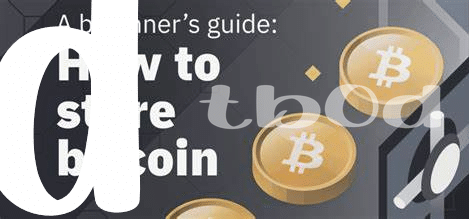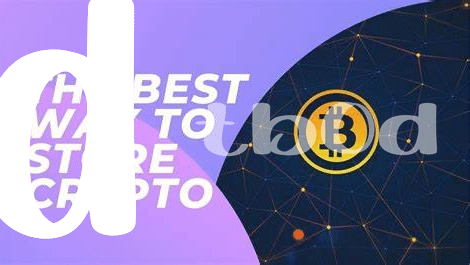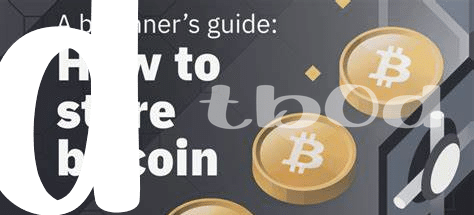What Is Blockchain? Discovering the Basics 🌐

Imagine a giant, transparent ledger where everyone can write down transactions, but once written, they can’t be erased or changed. That’s the essence of blockchain. It’s like a digital notebook that keeps a permanent record of who sent what to whom, all transparent for everyone to see but secure from tampering. This technology came into the spotlight with the rise of digital currencies, like Bitcoin, but its potential stretches far beyond.
Blockchain operates on the principles of decentralization and trust. Instead of having a central authority like a bank oversee transactions, blockchain distributes the task across a network of computers. When these computers approve a transaction, it gets added to a “block” of data. Once full, this block is added to a chain of previous transactions, creating a historical ledger that’s not just transparent but incredibly difficult to hack. This innovative approach to managing data has the potential to revolutionize countless industries, offering a new level of security and transparency.
| Term | Simple Explanation |
|---|---|
| Blockchain | A digital ledger recording transactions, resistant to modification |
| Decentralization | Operation without a central authority, distributing control across a network |
| Block | A package of data in the blockchain |
| Chain | A series of blocks linked together |
How Does Blockchain Work? an Easy Explanation 🔍
Imagine a world where every transaction we make, from buying morning coffee to selling a used car, is recorded in a giant digital ledger. This ledger isn’t stored in one place like a bank or a company’s server; instead, it’s copied and spread across a vast network of computers. This is the essence of blockchain technology. When a transaction occurs, it’s grouped together in a ‘block’ with other transactions that happened at around the same time. These blocks are then linked together in chronological order, creating a continuous ‘chain’ of transactions – hence the name, blockchain. What makes it special? Once a transaction is recorded in a block and added to the chain, it’s nearly impossible to alter. This is because every copy of the ledger across the network needs to be updated simultaneously, a task that is not only gargantuan but also secured by complex cryptographic puzzles. This ensures that everyone can trust the ledger without needing a central authority. The implications of such a system are vast, extending far beyond the realms of cryptocurrency. For those interested in exploring how digital currency is making waves in different sectors, you might find exploring https://wikicrypto.news/gourmet-experiences-dining-out-with-digital-currency quite enlightening, showcasing just how versatile and integrated this technology is becoming in our daily lives.
Why Blockchain Matters: the Game-changing Potential 🎲

Picture a world where trust is built into every transaction, where middlemen in deals become a thing of the past, and where your personal information remains safe and sound in your own hands. This is the potential of blockchain technology. It’s not just a buzzword; it’s a revolutionary way of keeping records that’s secure, transparent, and hard to tamper with. Imagine buying a house with a click, without the mountain of paperwork and weeks of waiting, or voting in elections knowing your vote is truly counted and protected. Blockchain makes all this, and more, possible.
Moreover, its implications go far beyond just digital currencies like Bitcoin. From healthcare, where patient records can be securely and anonymously stored, to supply chains that are more transparent and efficient, blockchain’s potential is vast. It democratizes data, giving power back to the individuals, and opens up a world of innovation and opportunity. The journey ahead is not without challenges, including scalability and regulatory hurdles, but the transformative power of blockchain is undeniable. It’s a technology that promises a future where transactions are safer, processes are more efficient, and the middlemen are fewer, making it a true game-changer in the digital world.
Exploring the Uses of Blockchain Beyond Bitcoin 💡

When most people hear “blockchain,” their minds likely jump straight to Bitcoin. But this technology’s magic stretches far beyond the realms of cryptocurrency. Imagine a world where you can trace the origins of your coffee beans right from your breakfast table or a system where doctors across the globe can securely share medical records at the click of a button – this is the promise blockchain brings. It’s not just about digital money; it’s about creating transparent, unchangeable records for everything from property titles to supply chains, making processes more efficient, secure, and transparent. Artists and creators are getting in on the action too, using blockchain to ensure their work is rightfully theirs. And in the bustling world of finance, blockchain is making transactions quicker and cheaper. what can you buy with bitcoin versus ethereum shows just a slice of how versatile blockchain can be, transcending its roots and paving the way for a future where trust is built into the system, not just tacked on.
Overcoming Challenges: the Road Ahead for Blockchain 🚧
Blockchain technology, like any new kid on the block, faces its fair share of hurdles. Imagine trying to teach your grandma to send a message using a smartphone for the first time – it’s kind of like that, but on a global scale. The biggest challenges include people being wary of change, concerns about security, and the technical hiccups that come with scaling up something this big. However, it’s not all doom and gloom. Solutions are being whipped up faster than pancakes on a Sunday morning. Developers across the globe are working on making blockchain safer, more reliable, and user-friendly. It’s a team effort, with the tech community joining hands to ensure blockchain can reach its full potential.
Here’s a quick rundown of the major challenges and potential solutions:
| Challenge | Potential Solution |
|---|---|
| Scalability | Developing new protocols to handle more transactions per second |
| Security Concerns | Enhanced encryption methods and security protocols |
| Regulation and Acceptance | Working with regulatory bodies to ensure legal compliance |
As blockchain continues to evolve, the road ahead looks promising. With a little bit of patience and a lot of smart work, overcoming these challenges will pave the way for a tech revolution we’re all waiting to witness.
Getting Started with Blockchain: Next Steps for Beginners 🚀

Diving into the world of blockchain might seem like embarking on a journey to a new planet, but fear not, the path for beginners is paved with fascinating opportunities. Think of blockchain as a digital ledger that is accessible by many but owned by no one. Your next steps? Start by absorbing as much knowledge as you can. There are countless resources online that break down the complex topics into bite-sized, easy-to-understand pieces. Enroll in an introductory course or join a community of blockchain enthusiasts. Practice makes perfect, so why not try creating a digital wallet? It’s your gateway to understanding transactions and getting a hands-on experience. Plus, with your wallet, you’ll unravel the mystery behind what is bitcoin mining and the blockchain. This journey won’t always be smooth; however, the blockchain space is continuously evolving, and being part of this evolution is thrilling 🚀. Engage, ask questions, and immerse yourself. The blockchain is not just about technology; it’s about the people, the ideas, and the movement towards a transparent and secure digital future. Welcome aboard! 🌟
